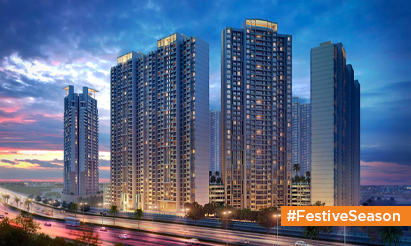Prefabricated Buildings: Are They Worth It? Weighing the Pros and Cons!
Prefabricated building, which began in Europe after World War II, has recently become a prevalent trend in many areas of the world and is quickly catching up in India. The construction process of a prefabricated or prefab structure, which is devoid of brick and mortar, merely employs the assembly of various components created in a factory on the development site. Steel frames for buildings, panels composed of wood, cement, gypsum, and other materials for walls and floors, ceilings, factory-made doors and windows, and ventilators are some of the most often used prefabricated construction raw materials.
What exactly is a prefabricated building?
A prefab (short for prefabricated) building is one that is constructed off-site and then brought to the final construction site for assembly. This type of construction entails fabricating various construction materials in a factory environment before shipping them to the job site for installation.
Unlike traditional homes, when a crew of labourers works for months to build the structure, modular homes come in segmented components that save time, money, and energy. Nonetheless, experts advise weighing the benefits and drawbacks before choosing one option over another.
Advantages of prefabricated structures
Saves construction time and money.
One of the most significant advantages of prefabrication is that it allows for faster construction than traditional methods. Because all of the elements are partially produced, just the assembly and connection of the parts takes place at the development site, saving time. “The complete process takes 6-8 weeks dependent on the internal and external parameters established,” says Sumit Agrawal, Architect and Interior Designer.
Cost-effective
Prefab houses are comparatively cost-effective while traditional building costs continue to rise. It makes use of low-cost basic materials such as terrace bricks, flooring, ceilings, and plasterboards. Because of the low cost, several developers have begun to use prefabricated components in their projects.
Reduces environmental stress.
The building industry is the world’s leading polluter. The high pace of building activity, along with inadequate raw material selection, significantly contributes to the environmental concern. The major building material, burned brick, is the primary source of air pollution and GHG emissions. “Construction of 170 billion bricks yearly consumes roughly 24 million tonnes coal and produces 61.3 million tonnes of CO2,” according to the TERI Study, Green Growth and Building Industry in India, 2015. Moreover, cement and steel are two essential elements that contribute to GHG emissions.”
The Disadvantages Of Prefabricated Houses
Planning takes longer.
While the building and assembly of the prefab property may be quick, the planning phase is generally lengthy. Locating the property, hiring a contractor, and preparing the site all take a significant amount of time and effort.
Problems with quality
One of the most well-known disadvantages of prefabricated buildings is that they do not provide the same degree of quality as conventional structures. “These approaches are restricted in terms of customization and service regions. Building designs limit major aesthetic modifications, and costs skyrocket when construction locations are more than 500 miles from the plant “According to Shivakshi Gogia, CEO of Ascent Group.
Damage possibility
“When prefabricated constructions are moved from the manufacturer site to the construction site, the danger of damage in transportation is always significant,” says Sumit Agrawal, Architect and Interior Designer. Furthermore, depending on how far the modules must travel, the final cost may increase.”
Can prefabricated structures be customised?
Certainly, prefab houses may be tailored to match the client’s individual demands and preferences. While prefab structures are constructed using prefabricated components, these components can be adjusted or customised to meet the specific needs of the project. Furthermore, a range of finishes and materials are available to customise the appearance of the structure.
What kinds of structures may be built utilising prefabrication?
Prefab construction technologies may be utilised to construct a wide range of structures, including residential residences, commercial constructions, and even multi-story structures. Prefab construction’s versatility allows for a broad range of designs, from simple and utilitarian to elaborate and detailed.
Disclaimer: The views expressed above are for informational purposes only based on industry reports and related news stories. PropertyPistol does not guarantee the accuracy, completeness, or reliability of the information and shall not be held responsible for any action taken based on the published information.





Informative post! Thanks for sharing such an interesting post with us. Keep sharing!
Modular construction’s impact on cost-effectiveness is undeniable. It’s great to see how this approach is making quality construction more accessible to a wider range of projects.
“Insightful read! Prefabricated buildings are indeed reshaping the construction landscape with their efficiency and sustainability benefits. This article brilliantly weighs the pros and cons, making understanding their value in today’s market easier. Well done!”